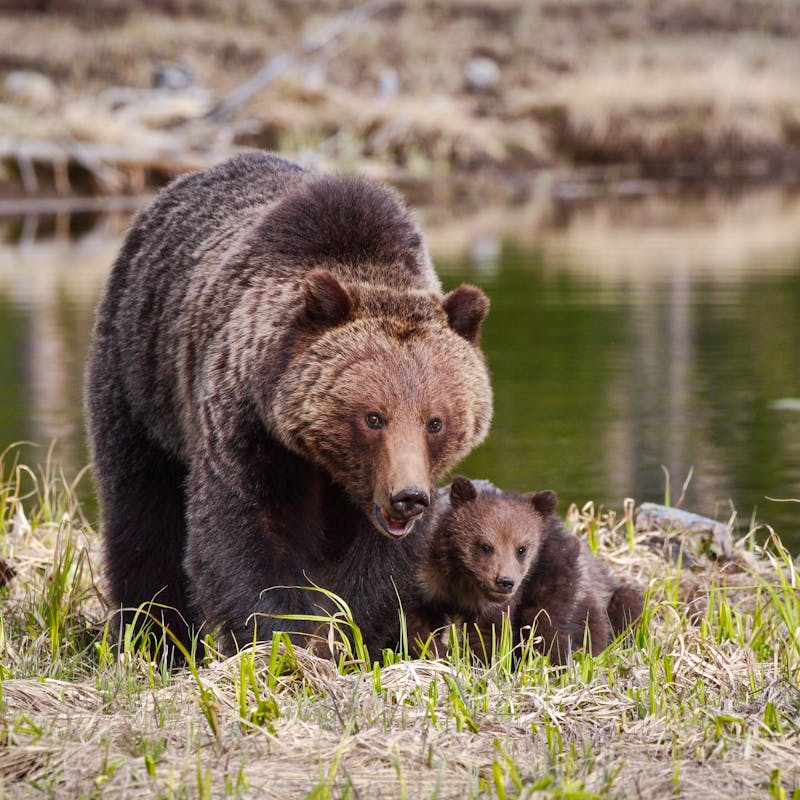Defenders of Wildlife recently released a white paper detailing habitat loss for the lesser prairie-chicken, a bird that was listed under the Endangered Species Act (ESA) as threatened in 2014 but was stripped of this protection by a federal court in 2015. The update about the bird’s shrinking habitat is timely as the Interior Department must announce a decision on the bird’s protections under the ESA this May.
Defenders' researchers reviewed data from 2015 to the present to study the impacts of delisting the bird. They found that about 50,000 acres of habitat have been converted to new development such as oil and gas infrastructure and nearly 600,000 acres have been impacted by this growth given federal guidelines that stipulate a 200-meter buffer around tall infrastructure, as the species avoids tall structures (a possible adaptation to avoid aerial predators). Additionally, more than 832,000 acres of habitat have been converted to new agricultural uses since 2016. This paints a dire picture of what is happening to the bird’s habitat—up to 6% habitat loss in some ecoregions in just five years—that the lesser prairie-chicken needs to survive.
“The lesser prairie-chicken is in dire need of protection,” said Jacob Malcom, PhD, director of Defenders of Wildlife’s Center for Conservation Innovation and co-author of the report. “Without immediate intervention, the species is all too likely to go extinct. The Fish and Wildlife Service should act to relist the bird to protect it from the dual threats of habitat destruction and climate change.”
Defenders and partners petitioned the U.S. Fish and Wildlife Service (FWS) to protect the prairie-chicken in September 2016, but the Trump administration repeatedly failed to make a decision about its protection and the groups were forced to go to court. In September 2019, the groups scored a legal victory when a federal court handed conservation groups a settlement agreement ensuring that the lesser prairie-chicken would receive a decision about protection under the ESA by May 26, 2021.
Once as many as 2 million lesser prairie-chickens occupied the Great Plains before the beginning of Euro-American settlement. The species has declined to about 38,000 birds today across less than 17% of its original range.
The bird lives in Colorado, Kansas, New Mexico, Oklahoma and Texas. It is severely threatened by habitat loss and fragmentation such as what was analyzed in this research, caused by oil and gas development, cropland conversion, livestock grazing, roads and power lines.
“The data are clear. Habitat for the lesser prairie-chicken is disappearing at an alarming rate,” said Michael Evans, PhD, senior conservation data scientist, Defenders of Wildlife, and lead author of the report. “The bird needs this habitat to survive, but agriculture and oil and gas infrastructure are degrading and fragmenting its home.”
In addition to habitat loss, the lesser prairie-chicken is threatened by climate change. The summer of 2011 saw some of the hottest and driest conditions on record in the Southern Plains, with ground temperatures exceeding 130 degrees Fahrenheit — a critical threshold above which lesser prairie-chicken eggs cannot survive.
Overall global warming is expected to drive a four-fold increase in the number of 100-plus degrees days on the Southern Plains.
For over 75 years, Defenders of Wildlife has remained dedicated to protecting all native animals and plants in their natural communities. With a nationwide network of nearly 2.1 million members and activists, Defenders of Wildlife is a leading advocate for innovative solutions to safeguard our wildlife for generations to come. To learn more, please visit https://defenders.org/newsroom or follow us on X @Defenders.
Media Contact
News

Defenders Celebrates Oregon Bill that Paves the Way for Safer Roads

